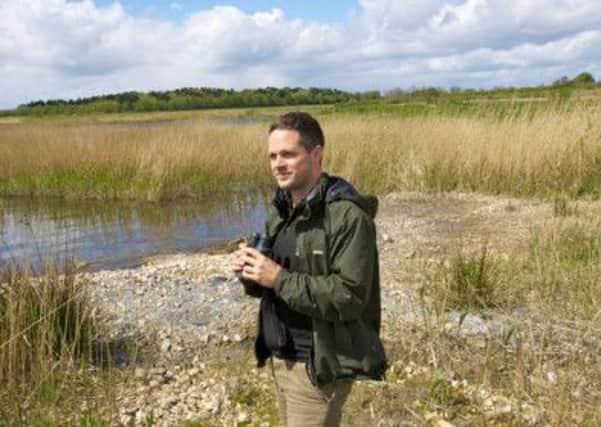Flying start for winged wonders at old mine


A decade ago this was one of the widest and deepest holes in England, an open-cast mine gouged out by excavators the size of creatures from Jurassic Park. Now it is one of the country’s largest complexes of lakes and wetland.
So vast is the site that until this month most people have known parts of it by different names. Swillington Ings is one, an area of flooded mineworkings, wet grassland and woods close to the eponymous village and including Astley Lake, a not-too-well-kept secret amongst Yorkshire birdwatchers.
Advertisement
Hide AdAdvertisement
Hide AdDwarfing even this huge area is a collection of lakes and flashes with names like Bowers Lake, Lowther Lake and Lemonroyd Lake, together with a series of oxbows formed in the 1980s when the course of the River Aire was diverted after a major flood.
But from this weekend the entire site will become known as RSPB St Aidan’s, which has taken 10 years to create since UK Coal stopped mining there, and already it is attracting some of Britain’s rarest species of birds. It is an appropriate place to launch the RSPB’s brand new reserves slogan: “Giving Nature a Home.”
There are small numbers of nesting avocets, the emblem of the RSPB and symbol of successful nature conservation in Britain. Several breeding pairs of the highly secretive bittern have also established themselves, while other VIP species seen regularly over the past few weeks include black-necked grebe, marsh harrier, hobby, short-eared owl, little-ringed plover, gadwall and garganey.
“These star species are really exciting,” says the RSPB’s Chris Woolner, “but St Aidan’s is not just about rarities. Every time I come here the air is almost thick with birds. Today there are clouds of swifts and black-headed gulls, and great numbers of wildfowl out on the lakes. I can’t think of any other inland site in the country where there is such a huge volume of birds.”
Advertisement
Hide AdAdvertisement
Hide AdWhen UK Coal ceased operations at the site in 2003 after extracting almost three million tonnes, the company was subject to a planning obligation known as a Section 106 Agreement, which meant it was legally bound to clean up the landscape and make it suitable for recreation and attractive to wildlife. A £1m trust was set up to pay for the restoration, administered by Leeds City Council, which brought in the RSPB as the site’s long-term managers.
The process of designing the site for both wildlife and the public took longer than expected, however, and there was a massive civil engineering job needed to turn the main lake into a vast overflow for the River Aire during times of flood risk. By installing strategically placed sluices, the water can be moved around St Aidan’s through a series of cells, using the main lake first before entering the wet grassland and reedbeds, to keep the potentially destructive high water levels away from sensitive bird nesting areas like those used by the avocet colony.
Another challenge has been to plan for the easy co-existence of wildlife and public. Unlike many sites managed or owned by the RSPB, St Aidan’s has unrestricted footpaths and bridleways across much of the site. Some 7.5 miles of public rights of way have been created, and in the years since UK Coal ceased operations these have been well-used by residents of nearby communities like Swillington, Oulton, Mickletown, Great Preston and Allerton Bywater. In view of local sensitivities, the site is being promoted as a “nature park”.
RSPB Aidan’s opens today. The reserve’s visitor centre is near the junction of Astley Lane, Queen Street and Wood Lane, between the villages of Great Preston and Allerton Bywater. The postcode for SatNav is LS26 8AL. The grid reference is SE399287.
Parking is £2.50 for non-RSPB members, but free for the first week.